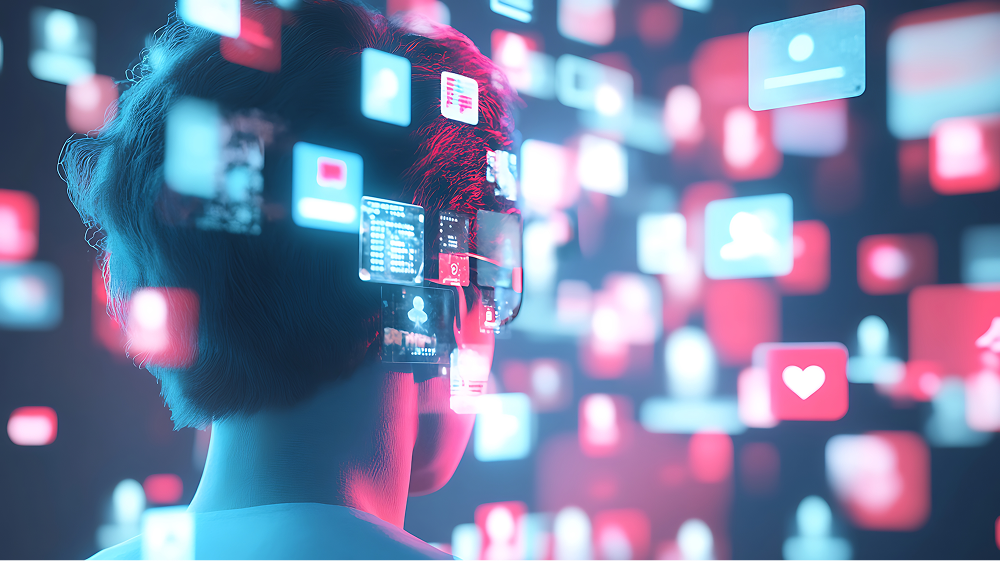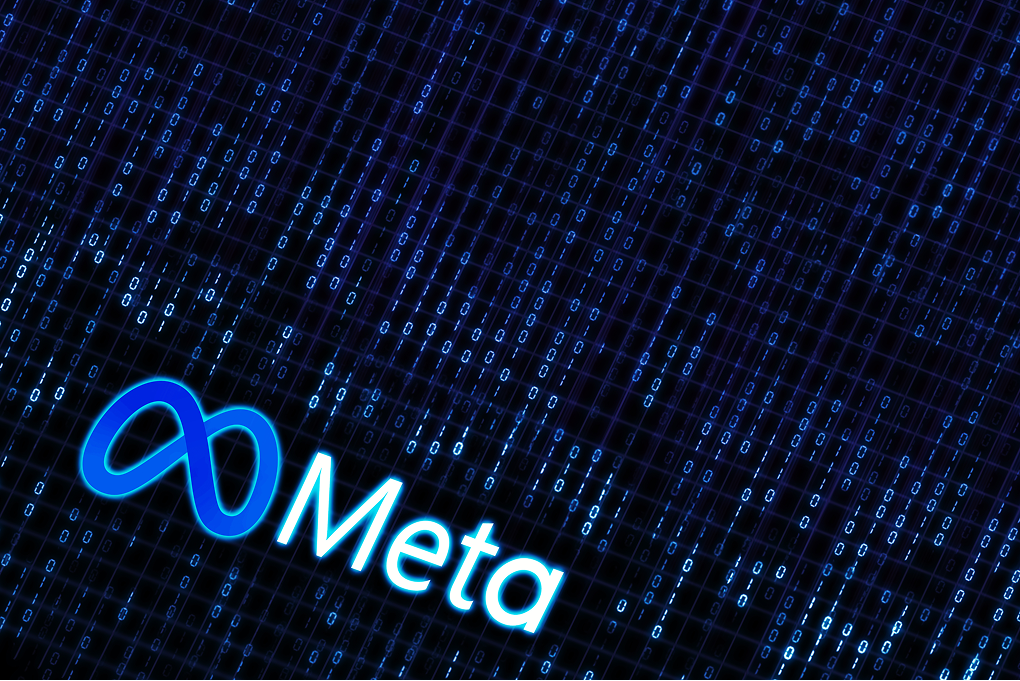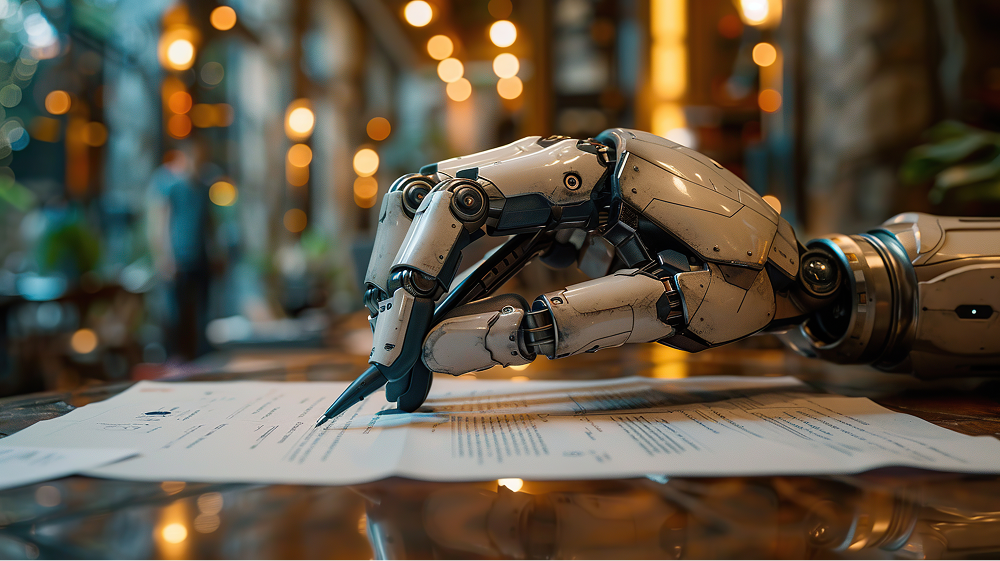We used to create posts manually three times a day, track spreadsheets of engagement data, and spend nights creating content for the week. That world is fading fast. Companies are using AI social media managers to handle the grunt work—scheduling posts, analyzing performance data, and even generating content ideas. The technology has moved beyond basic automation into something more interesting: tools that actually understand what makes your audience tick.
Take AI content generators for social media. They’ve gone from producing awkward, obviously robotic posts to creating captions that sound genuinely human. Or consider AI analytics tools that can spot patterns in your content performance that you’d never catch manually—like how your audience engages differently with carousel posts on Tuesday mornings versus video content on Friday afternoons.
This isn’t about replacing marketers. It’s about handling the repetitive stuff so you can focus on strategy, creativity, and actual human connection with your audience.
What is AI in Social Media?
AI in social media is basically smart software that handles the repetitive work nobody wants to do. You know how you used to manually schedule posts, dig through analytics, and respond to the same customer questions over and over? AI takes care of that stuff.
Tools can now write decent captions, generate images that match your brand, and even edit videos. They analyze what’s working for competitors and suggest hashtags that might actually get you seen.
Behind the scenes, AI is doing the grunt work—scanning for brand mentions, flagging nasty comments before they spread, spotting trends before they peak. It’s not perfect, and you still need a human to make the final calls. But it beats spending four hours every Monday planning content or manually responding to 100 nearly identical questions.
AI in Social Media Market Size
The money pouring into AI for social media is staggering. We’re talking about a market that hit around $2.2 billion in 2023 and is projected to blow past $12 billion by 2031. That’s not a typo—roughly 26% annual growth.
Why the explosion? Companies finally realized they can’t manage social media at scale without AI. A brand getting thousands of comments daily either invests in AI tools or drowns. There’s no middle ground anymore.
What’s driving growth isn’t just big corporations either. Small businesses and solo creators are buying in because the tools actually became affordable and useful. Five years ago, good AI tools cost enterprise prices. Now you can get decent ones for $50 a month or less. That accessibility opened the floodgates.
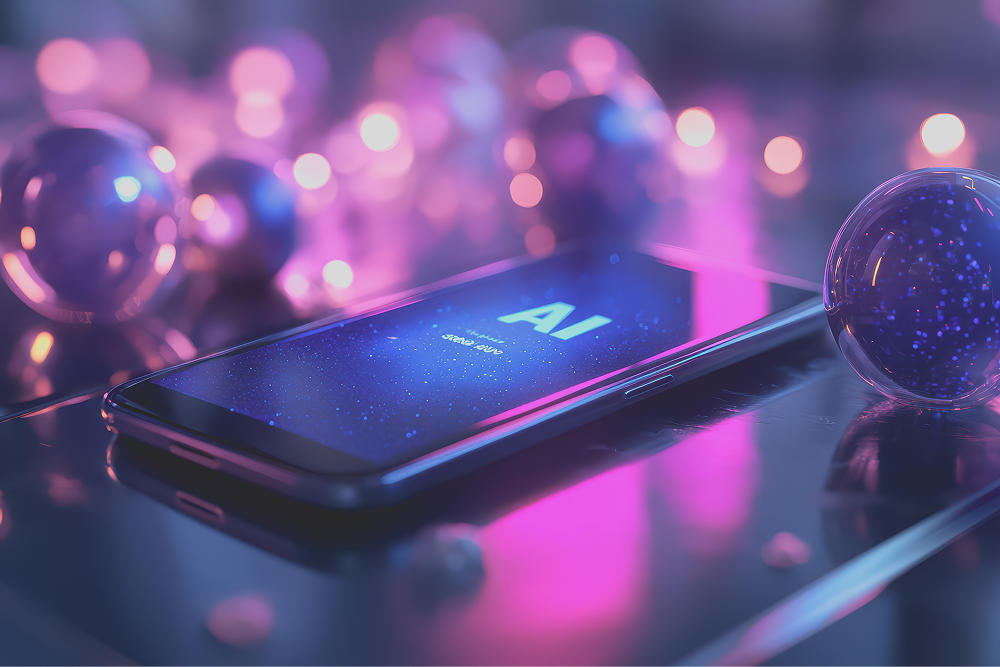
Key Advantages of AI in Social Media
Accelerate Revenue
AI spots money-making patterns that are easy to miss when you’re buried in daily tasks. It notices things like certain products getting way more engagement than others, or specific audience segments that convert at three times the normal rate.
Increased Efficiency and Accuracy
Sunday afternoons used to disappear into social media prep. Writing captions, resizing images for different platforms, scheduling everything manually. That whole process now takes under an hour because AI handles the tedious parts—resizing photos, drafting caption variations, finding optimal posting times.
The consistency matters even more than the speed though. AI doesn’t forget to post when you’re sick or accidentally use the wrong brand hashtag when you’re rushing through your fifth post of the day. It doesn’t schedule a cheerful promotion on a day when something horrible just happened in the news. That last one is a mistake you only make once.
Better Audience Targeting
Most of us start with broad strokes—women 25-40 interested in fitness, something like that. AI goes several layers deeper and finds patterns like engagement rates being five times higher with women 28-35 who follow sustainable brands and mostly browse on Tuesday and Thursday mornings.
Instagram ads have completely flopped, then the exact same ad with AI-selected targeting crushed it. The lookalike audiences Facebook’s AI creates are almost unsettling in how well they convert. These people behave like they’re already familiar with your brand even though they’ve never heard of you.
Improved Customer Service
People message brands at midnight expecting answers. Before chatbots, those late-night questions about shipping just sat there until someone got to the office. Basic questions now get instant responses—order tracking, return policies, store hours, that kind of thing.
The good chatbots know their limits though. Nothing tanks customer satisfaction faster than a bot stubbornly trying to handle a complex complaint it can’t understand. Smart AI recognizes when a human needs to take over. Teams end up dealing with actual problems instead of typing “yes, we ship to Canada” a hundred times a week.
Cost Reduction
The budget math is straightforward. Three people used to manage our social media. One person now does it with AI tools, and the results are actually better. Those other two people moved into strategy roles, so nobody lost their job, but the cost savings were significant.
Ad spend efficiency improved too. AI stopped showing our ads to people who were never going to buy. The cost per thousand impressions stayed the same, but the conversion rate doubled because money stopped going toward people just casually browsing. Smaller budget, better results. That almost never happens in marketing.
Personalized Content Recommendations
Everyone used to see identical posts from brands. That model is basically dead now. AI personalizes what each follower sees based on their actual behavior and interests.
Does anyone watch every behind-the-scenes story? They’ll see more of that content. Someone only clicks product links and scrolls past everything else? They get more offers and less filler. It feels like running a thousand different content strategies for a thousand different people, except you’re not creating any extra work.
Real-Time Performance Tracking
The old approach meant posting something, checking the stats the next day, realizing it tanked, and having no way to fix it. The new approach means getting an alert two hours after posting that engagement is way down, then adjusting strategy before the day ends. Or getting notified that something’s unexpectedly taking off so you can jump into comments while people are actually engaged.
AI dashboards filter out the vanity metrics too. Total reach and impression numbers don’t matter much anymore. Conversion rates matter. Tracking which specific content led directly to sales matters. ROI matters. AI focuses on those numbers now, the ones that actually affect whether your business makes money.
Disadvantages of AI in Social Media
Privacy Concerns
The amount of data these platforms collect is frankly disturbing. Every single interaction gets logged—how long you looked at a photo, which videos you rewatched, the exact second you stopped scrolling. They know your sleep schedule based on when you’re active. They know your relationships from who you message most. They know your insecurities from what ads you click.
Bias and Fairness
AI trained on biased data produces biased results. Sounds obvious, but the scale of the problem keeps getting worse. Facial recognition systems from major tech companies have misidentified Black individuals at rates five times higher than white individuals. That’s not a small margin of error.
Content moderation hits marginalized communities harder. Posts from LGBTQ+ creators discussing their experiences get flagged as “sensitive content” while hate speech slips through. Women receive different job ads than men with identical browsing histories. The AI learned these patterns from decades of discrimination, and now it perpetuates them at massive scale. Tech companies acknowledge the problem in blog posts and diversity reports, then the same biases show up in the next algorithm update.
Transparency
Good luck getting a straight answer about why the algorithm does anything. Your post with 50 likes versus your identical post last week with 5,000 likes—Instagram will never tell you what changed. TikTok’s For You page might as well be magic for how much they explain it.
Accounts get shadowbanned and the creators find out weeks later when they notice engagement tanked. No notification, no explanation, no appeal. The platforms treat their algorithms like Coca-Cola treats its recipe—proprietary secrets more valuable than user trust.
Accountability
Nobody takes the fall when AI screws up. A chatbot tells someone to stop taking their medication—that’s just an unfortunate error, maybe a press release about improving safety. A news organization’s legitimate content gets removed during a major event—oops, the algorithm was overzealous, here’s a generic apology.
The phrase “the algorithm decided” has become corporate cover for avoiding responsibility. Decisions that would get a human employee fired are just bugs to patch in the next update. There’s no executive losing their job when the content moderation AI removes crucial public health information during a pandemic. No real consequences, just promises to do better next time.
Manipulation and Misinformation
Creating convincing fake content used to require serious resources and expertise. Now it takes an afternoon and maybe fifty bucks. Deepfakes are getting scarily good. Fake accounts pass as human easily enough that even careful users get fooled. Bot networks can make fringe opinions look like mainstream consensus.
The 2020 and 2024 elections showed how fast AI-generated misinformation spreads. Fact-checkers are still debunking yesterday’s lies while today’s fake stories rack up millions of views. One moderately skilled person can launch misinformation campaigns that used to require entire government agencies. The tools for making fakes improve daily while detection methods lag further behind.
Job Displacement
This hits hard because it’s happening right now to people I know. A marketing agency near me laid off four of their six social media managers last year. Replaced them with AI tools and kept two people to oversee everything. Those four people had families, mortgages, car payments.
Customer service departments that used to employ thirty people now run on chatbots plus three supervisors. Everyone talks about workers transitioning to higher-level strategic roles, but math is math—you can’t fit thirty people into three strategy positions. The unemployment line doesn’t care about efficiency gains. This displacement is speeding up, and most workers in these fields can see what’s coming.
Ethical Use of Data
Facebook manipulated users’ feeds to study emotional contagion—made people sadder or happier without telling them. That actually happened. Users were research subjects with no consent form, no ethics review board, nothing.
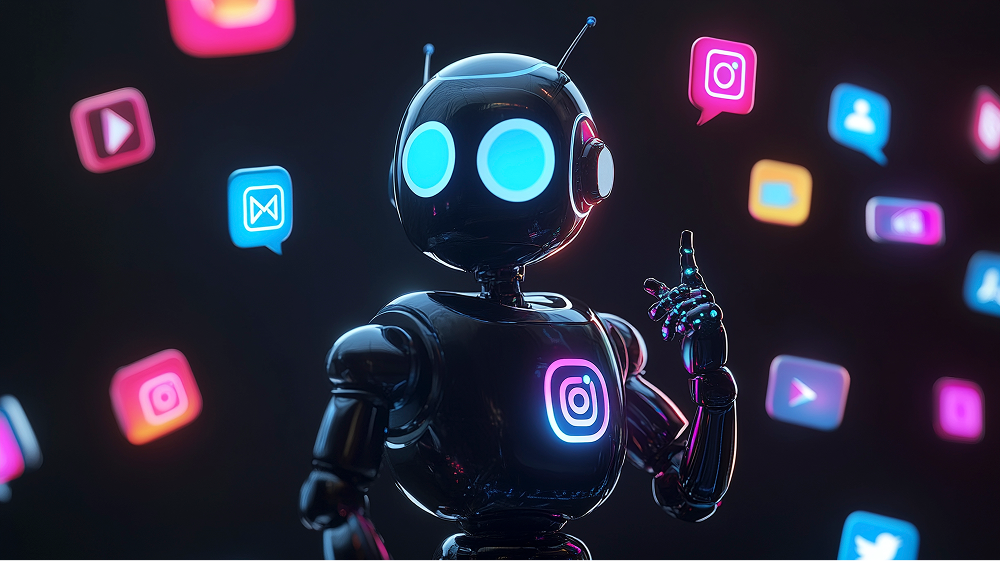
Ways to Use AI in Social Media
Manage Advertising
AI has completely changed how ad campaigns run. The platforms now handle most of the heavy lifting—Facebook and Instagram’s AI adjusts bids in real-time based on who’s most likely to convert. It tests different ad variations automatically, shifting budget toward whatever’s working and killing underperformers before you waste money.
Content Generation
AI writing tools have gotten surprisingly decent at first drafts. They won’t replace good writers, but they’ll absolutely knock out caption variations, headline options, and basic post copy when you’re staring at a blank screen at 4 PM with nothing.
The image generation is where things get interesting. Tools like Midjourney and DALL-E create custom visuals without photoshoots or designer fees. A friend runs a sustainable fashion brand and uses AI to mock up product concepts before committing to production. Her engagement on concept posts helps her decide what to actually manufacture. Video tools can now edit footage, add captions, and resize content for different platforms automatically.
Social Listening and Trend Monitoring
AI monitors millions of conversations simultaneously, catching brand mentions you’d never find manually. It picks up on sentiment shifts—noticing when people start complaining about a product issue before it becomes a full crisis. One beauty brand caught wind of a batch problem through AI social listening and issued a recall before major news coverage. Saved their reputation.
The trend monitoring spots emerging topics while they’re still small. AI noticed “cottage cheese recipes” trending on TikTok weeks before mainstream media picked it up. Brands that jumped on it early got massive organic reach. By the time everyone else noticed, the trend was already saturated.
Predictive Analytics for Targeted Marketing
AI analyzes past campaign data to forecast what’ll work next. It identifies patterns like “carousel posts featuring customer testimonials convert 3x better on Wednesday mornings” or “video content underperforms for this specific audience segment.” These aren’t hunches—they’re predictions based on thousands of data points.
The customer lifetime value predictions help too. AI spots which new followers are likely to become high-value customers based on their early engagement patterns. You can then focus retention efforts on people actually worth retaining instead of spreading resources equally across everyone.
Influencer Identification and Selection
Finding the right influencers used to mean scrolling through profiles for hours. AI now analyzes engagement rates, audience demographics, and authenticity scores in seconds. It flags influencers whose followers actually match your customer base instead of just having big numbers.
The fake follower detection matters more now than ever. AI checks if an influencer’s audience is real people or bot accounts. It looks at engagement patterns—10,000 likes but three comments screams fake engagement.
Customer Service Automation
Chatbots handle the repetitive questions that used to clog up support queues. Order tracking, return policies, store hours—all automated. The good systems escalate complex issues to humans instead of frustrating customers with canned responses that don’t help.
One e-commerce company cut their response time from four hours to under two minutes for basic inquiries. Their support team now focuses entirely on complicated problems that actually need human judgment. Customer satisfaction went up even though they reduced headcount, because people get instant answers for simple stuff and better help for complex issues.
Post Scheduling and Optimization
AI figures out when your specific audience is most active and schedules accordingly. Not generic “best times to post” advice—actual data from your account showing when your followers engage. It adjusts for time zones if your audience spans multiple regions.
Some tools reschedule underperforming posts automatically or suggest different times to try again. A nonprofit saw their engagement double just by letting AI handle scheduling instead of posting at convenient times for their staff.
Image and Video Recognition
AI tags visual content automatically, identifying products, locations, people, and activities in photos and videos. This makes content searchable and helps with organization when you’re managing thousands of assets.
Brand safety tools scan images for inappropriate content before it goes live. They catch things that would damage your brand—logos in wrong contexts, unintended background elements, or content that violates platform policies. Better to catch these issues before posting than deal with the fallout after.
Performance Analysis and Data Analytics
AI dashboards cut through metric noise to show what actually matters. Revenue attribution tracking reveals which posts drove sales, not just likes. It maps customer journeys from first touch to conversion, showing exactly how social media contributes to your bottom line.
The competitive analysis tools track rival brands automatically, flagging when competitors launch campaigns or shift strategy. You see what’s working for them without manually checking their profiles daily. One agency uses this to pitch clients by showing exactly where competitors are beating them and where opportunities exist.
Content Moderation
AI filters out spam, hate speech, and inappropriate content before human moderators see it. The systems catch most obvious violations instantly—racial slurs, graphic violence, scam links. Moderators then review edge cases where context matters.
This protects both your community and your moderators from constant exposure to harmful content. Brands with active communities used to need teams reviewing every comment manually. Now AI handles 80-90% automatically, and humans focus on nuanced situations where judgment calls matter.
Top 5 Tools For AI in Social Media
Hootsuite
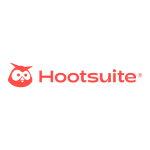
Hootsuite has been around forever and keeps getting better. It handles scheduling across all your accounts, suggests when to post based on your actual audience data, and breaks down analytics without requiring a statistics degree to understand them. The sentiment analysis catches brewing problems in brand mentions before they blow up. If you’re juggling five or more social accounts, having everything in one place saves your sanity.
Sprout Social
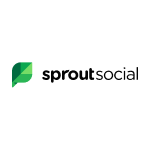
Sprout Social costs more but delivers on social listening and customer management. The AI digs through thousands of conversations and surfaces the stuff you actually need to know about your audience. The chatbot answers basic questions while your team handles the complicated stuff. Companies that take customer engagement seriously usually end up here, though you’ll feel the price in your budget.
Buffer

Buffer doesn’t try to do everything, which is exactly why small businesses and solo creators love it. The AI handles scheduling and basic analytics without burying you in features you’ll never use. It looks at what worked before and suggests similar content. Not the most powerful option here, but sometimes you just need something that works without a learning curve.
Canva

Canva’s AI features have gotten really good for visual content. The Magic Design tool takes your images and generates layout options automatically. Background remover works in one click. The writing assistant helps with headlines when words aren’t cooperating. For businesses without a designer on staff, Canva makes your content look professional instead of like you threw it together during lunch.
Brandwatch

Brandwatch is the enterprise beast for social listening and analytics. It processes millions of conversations simultaneously, catching trends and sentiment shifts as they happen. PR teams live in this tool during crisis situations. The price tag matches the enterprise positioning—if you’re a small business, keep scrolling.
AI Integration on Existing Platforms
The big social platforms have woven AI so thoroughly into everything they do that you can’t really separate the two anymore. This isn’t optional technology sitting on the side—AI is running the show.
Facebook and Instagram operate almost entirely on AI at this point. Your feed isn’t chronological and hasn’t been for years. The algorithm picks what you see based on everything you’ve ever done on the platform—what you pause on, what you skip, who you message, what time of day you’re most active. Reels work the same way TikTok does, learning your preferences scary fast. The ad system handles itself now too. Businesses set a budget and goal, then Meta’s AI figures out who to show ads to, how much to bid, when to run them. The newest feature actually generates entire ad campaigns from a simple description—writes the copy, creates images, picks the audience.
TikTok is basically one giant AI experiment. The For You page is a pure algorithm, analyzing microseconds of your behavior. How long you watched something. Whether you rewatched it. What sounds you’ve engaged with. Videos you scrolled past in half a second. Two people could follow the exact same accounts and see completely different content because the AI built separate profiles for each of them. All those effects and editing tools that make videos look professional run on AI too.
LinkedIn rolled out AI everywhere over the past two years. The feed shows you industry content it thinks matters to your career. Job recommendations match your experience in ways basic keyword searches never could. The writing assistance tools generate post suggestions and connection requests. Recruiters basically let AI do the initial candidate screening now—it surfaces profiles based on skill patterns and career trajectories rather than whoever stuffed the most keywords into their resume.
X uses AI to moderate content, identify trending topics, and decide what shows up in your algorithmic timeline. The days of seeing every tweet in order are long gone for most users. The recommendation engine suggests accounts and tweets based on what you’ve engaged with before. Grok, their chatbot, sits right in the platform now answering questions and generating content. Community Notes relies on AI to flag misinformation and surface corrections.
YouTube has run on AI recommendations for years, but it’s expanded way beyond that now. Automatic captions, translation into 80+ languages, detecting chapters in videos, analyzing which thumbnails perform better—all AI. The algorithm determines which videos get promoted based on watch time and whether people actually finish them. Creators optimize for the algorithm more than for human viewers at this point because the AI controls whether anyone sees their content.
Pinterest built everything around visual recognition AI. It identifies objects in images, recommends similar pins, and lets people search by uploading photos instead of typing. The shopping features match products to your taste profile automatically, creating personalized storefronts for each user.
Opting out isn’t really an option anymore. Using these platforms means accepting that AI decides what you see, what performs well, and how you experience the entire thing. The integration runs so deep that the platforms wouldn’t function without it.
Biggest Social Media Sites Use AI
YouTube

500 hours of video get uploaded every minute, and only AI makes that remotely manageable. The recommendation algorithm is responsible for 70% of what people watch—it’s gotten that good at predicting what’ll keep you on the platform. AI generates captions automatically in dozens of languages, catches copyrighted music in seconds, and flags videos that break rules. Creators obsess over the algorithm because it controls their entire career. It decides if your thumbnail works, if your video is too long, whether you get recommended or buried.

Pretty much everything runs on AI now. Your News Feed hasn’t shown posts chronologically in years—the algorithm picks what you see based on thousands of data points about your behavior. AI spots fake accounts, catches hate speech in over 100 languages, and removes most rule-breaking content before humans ever review it. They killed facial recognition tagging after the privacy blowback, but AI still runs ad targeting, catches Marketplace scams, and powers nearly every feature.

Took Facebook’s AI and built on top of it. Reels work exactly like TikTok’s For You page, learning what you like from tiny signals in how you watch. Your Explore page is all algorithms—showing you stuff from accounts you don’t follow because it thinks you’ll engage. AI does most of the moderation work too, shutting down spam accounts and fake engagement operations before they spread.
TikTok

Basically an AI company that happens to make a social app. The algorithm is so accurate at predicting what you’ll watch that it feels like mind reading. It tracks how long you watch videos down to fractions of a second, notices what you rewatch, monitors which sounds you engage with, and builds a profile so specific that no two feeds look alike. The addictive nature everyone talks about comes directly from how well the AI learns what you want.
X

AI curates your timeline, figures out what’s trending, and moderates content at massive scale. Grok, their chatbot, lives right in the app now generating responses and content. The algorithm decides which tweets blow up and which ones nobody sees. Community Notes uses AI to add fact-checks to misleading posts, though how well that works is debatable.

AI is all over the professional networking side. Job suggestions match your experience and where your career seems headed. Your feed shows industry content the algorithm thinks matters to you. The writing tools will draft your posts and connection messages if you let them. Recruiters basically use AI to do initial candidate screening now—it finds patterns in resumes that keyword searches miss.

Stays pretty light on AI compared to Facebook and Instagram, mostly using it for spam detection and stopping harmful content. The end-to-end encryption limits what AI can see, which seems deliberate. Meta recently added chatbot features that can answer questions and make images in your chats, though most people probably haven’t used them yet.
Snapchat

Built their reputation on AR filters, and all of that runs on AI. Every lens that changes your face, adds animations, or layers effects on the real world uses computer vision and machine learning. Spotlight feed recommendations use AI too, though not as aggressively as TikTok or Instagram push content at you.

Uses AI for moderation, spam catching, and more recently for personalizing your feed. The site used to be all about chronological posts and upvotes deciding what you saw. Now AI influences your home feed more than people realize. AutoModerator filters content across millions of communities using preset rules, though calling it AI is generous compared to what other platforms do.
Top 10 AI in Social Media Examples from Brands Who Are Ahead of the Curve
Sephora’s Virtual Artist
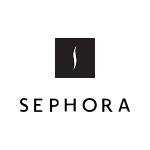
Sephora nailed AI-powered try-ons years before most brands figured out the technology. Their app uses AR and AI to let customers test makeup virtually through their phone camera. The tech recognizes facial features accurately enough that the lipstick shade or eyeshadow actually looks realistic. This isn’t just a gimmick—customers who use the virtual try-on convert at higher rates because they’ve already seen how products look on them.
Netflix’s Content Recommendations

Netflix treats social media as an extension of their recommendation engine. Their AI analyzes what you watch, then surfaces relevant content on Instagram and Twitter feeds. They create highly personalized social ads showing you trailers for shows similar to what you’ve binged. The memes and screenshots they share on social media aren’t random either—AI helps identify which moments from shows will resonate most with different audience segments.
Starbucks Mobile Ordering and Personalization
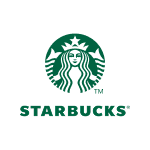
Starbucks uses AI to personalize offers based on purchase history, location, weather, and even time of day. Their social media campaigns tie directly into this personalization engine. If you’re a PSL fanatic, their Instagram ads start hitting you the second fall drinks launch. The AI knows your order patterns better than you do and targets accordingly.
Spotify’s Wrapped Campaign

Spotify Wrapped became a cultural phenomenon because AI made it personal and shareable. The campaign analyzes a year of listening data to create unique summaries for each user. People share their Wrapped results on every platform, generating massive organic reach. Other brands tried copying this, but Spotify’s AI makes the insights specific enough that people genuinely want to share them.
Nike’s Predictive Inventory and Social Commerce

Nike uses AI to predict which products will trend based on social media conversation and search patterns. They stock accordingly and push targeted ads on Instagram and TikTok before demand peaks. Their AI also identifies micro-influencers whose audiences match Nike’s customer base, leading to more authentic partnerships than just paying whoever has the most followers.
H&M’s Chatbot Stylist

H&M’s chatbot on Facebook Messenger acts as a personal stylist, asking about preferences and suggesting outfits. The AI learns from customer responses and browsing behavior to improve recommendations over time. It’s handled millions of conversations, reducing the load on human customer service while actually driving sales through personalized suggestions.
Domino’s Pizza Social Ordering
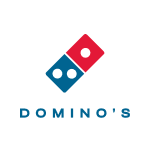
Domino’s lets customers order pizza through Twitter, Facebook Messenger, or by texting a pizza emoji. The AI remembers your usual order, confirms details, tracks delivery, and handles customer service questions. It sounds simple, but the underlying AI manages complex order processing across multiple platforms while maintaining conversation context.
The Washington Post’s Heliograf

The Post uses AI to write basic news stories and social media posts, particularly for sports scores, election results, and financial reports. Heliograf generated thousands of articles and social updates during the Olympics and midterm elections. Human journalists focus on analysis and investigative work while AI handles repetitive reporting.
Cadbury’s Social Listening Campaign
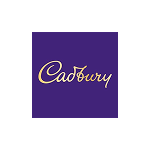
Cadbury used AI-powered social listening to identify cultural moments and conversations happening in real-time across India. When cricket matches happened, the AI detected trending moments and automatically generated relevant social content within minutes. This responsiveness made their brand feel present in conversations as they unfolded rather than reacting hours later.
Lego’s AI-Generated Content

Lego uses AI to analyze which user-generated content performs best, then creates similar content that resonates with specific audience segments. They also use image recognition to identify Lego creations shared online without hashtags or mentions, allowing them to engage with fans who might otherwise go unnoticed. This expanded their community engagement significantly beyond just monitoring branded hashtags.
These brands aren’t just slapping “AI-powered” on their marketing materials. They’re using the technology to solve actual problems—whether that’s personalizing experiences at scale, responding to trends in real-time, or making shopping more convenient. The common thread is that their AI implementation feels useful rather than gimmicky, which is why these examples work while so many other AI experiments flop.
The Future of AI in Social Media
AI in social media is heading toward hyper-personalization that’ll make current algorithms look primitive. We’re talking about feeds where every single piece of content gets generated or modified specifically for you—not just recommended, but actually created based on your preferences, mood, and context.
Virtual influencers will become mainstream. AI-generated personalities are already getting brand deals and millions of followers. They never age, never have scandals, and work 24/7. Real creators will need to adapt or get squeezed out.
Voice and video will dominate as AI makes production effortless. Anyone can create professional-quality content in minutes. The barrier to entry drops to zero, which means more noise but also more genuine voices that previously lacked resources.
Regulation is coming, probably too late. Governments will scramble to address deepfakes, misinformation, and privacy concerns after the damage is already done.
FAQ
AI is everywhere now, just invisible. Your phone’s autocorrect, Netflix picking your next show, spam filters, Google Maps rerouting you around traffic, Siri and Alexa, fraud alerts on your credit card—all AI. Most people hit AI 50 times a day without noticing because it became background infrastructure.
The guessing is gone. AI tells you when to post, who’ll engage, and what content will work before you publish. Ad targeting became precise—finding people who’ll actually buy instead of just matching demographics. One person with AI tools does what took five people three years ago. Content creation is faster with AI writing captions and making images. Chatbots handle customer questions at 3 AM. The catch is everyone has these tools now, so standing out got harder even as the technology improved.
Content tools like Jasper write captions and posts. Canva does layouts and removes backgrounds. Hootsuite and Buffer schedule posts at optimal times. Sprout Social and Brandwatch analyze performance and track mentions. Social listening tools monitor what people say about your brand. ManyChat and Chatfuel build chatbots for customer service. Influencer platforms vet partnerships and catch fake followers. Video tools add captions and resize clips automatically.
AI spots what’s about to blow up by analyzing millions of posts and engagement patterns. It catches trends while they’re still small so brands can jump in early instead of showing up late. The tools look for sudden spikes in mentions and unusual engagement clusters. They predict which trends will last versus which die in two days. Some suggest how your brand should participate based on your audience. Basically helps you stay relevant instead of constantly reacting to stuff that’s already peaked.
Treat AI as a helper, not a replacement. Use it to draft caption options when you’re stuck, then edit them to sound like you. Let it schedule posts when your audience is active. Generate placeholder visuals for expensive concepts. Test headlines and thumbnails to see what works.
Don’t post AI output without editing. It sounds generic and wrong, people notice immediately. Don’t let AI handle complaints or crises—those need actual humans. Don’t pump out low-quality content just to post daily. Volume doesn’t beat quality anymore.
AI makes stuff up confidently, so verify everything before posting. Don’t fake engagement with AI-generated comments—platforms catch it and kill your reach. Don’t let AI decide your strategy or brand voice. It gives data, not judgment calls.
Check AI images for copyright issues and weird artifacts before using them. Don’t create deepfakes even as jokes. The trust you lose when caught never comes back.
Conclusion
Social media used to eat up all the time of marketing specialists. Batch creating content, writing captions, scheduling posts across different platforms are finally gone. AI handles most of that now in under an hour. The brands doing well don’t spend money on agencies any more. They’ve already figured out AI tools that don’t let their content turn into robotic garbage. The tools can do so much more than what most businesses get from them, but nobody’s actually teaching people how to use them properly.
The repetitive stuff like resizing images for each platform, answering the same customer questions, figuring out optimal posting times are now done by AI. Now, you are free to think about strategy and actually connect with people instead of drowning in busywork. We help businesses get there without the trial-and-error phase that wastes months and money. Just straightforward implementation that works for your specific situation.
